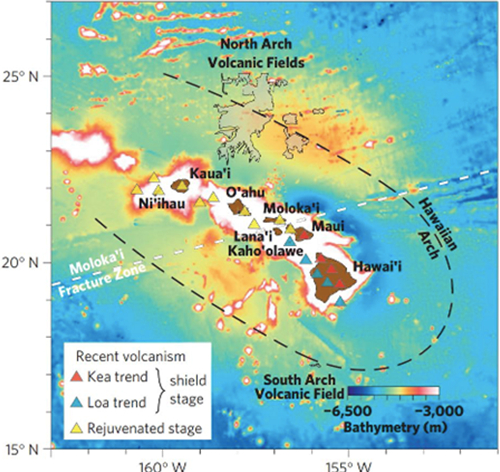Testing for Large Scale Hawaiian Arch Volcanism and Associated Magma Sources
The mass of large oceanic volcanic structures can cause flexural bulges in the adjacent crust. In some cases, unique volcanic structures have been observed along the fractures that form in association with these flexural bulges. The volcanic process that forms these structures is not well-studied or well-understood. In particular, the depth and underlying dynamics sourcing these submarine volcanic events is heavily debated.
In the fall of 2018, a seagoing expedition sampled several volcanic seamounts that formed along the flexural bulge associated with an ancient section of the Hawaiian seamount chain. The flat-topped features of some of the seamounts that were sampled indicate they were once large enough to breach the ocean's surface. Through radiometric dating and geochemical analyses of recovered lava flow samples, this project will unravel the underlying geodynamics behind these enigmatic seamounts.

Relevant papers
-
Kelly, C., Hourigan, T., Raineault, N., Balbas, A., Wanless, D., Marsh, L., Wipfler, R., Bellucci, L.A., Kane, R., 2019, ENIGMATIC SEAMOUNTS Exploring the Geologic Origins and Biological Communities in Papahanaumokuakea Marine National Monument. Oceanography. Oceanography, 32(1), 50-51.
Acknowledgements
Funded by the National Science Foundation award 2109567. Associated with the Ocean Exploration Trust Nautilus cruise N/A101.





